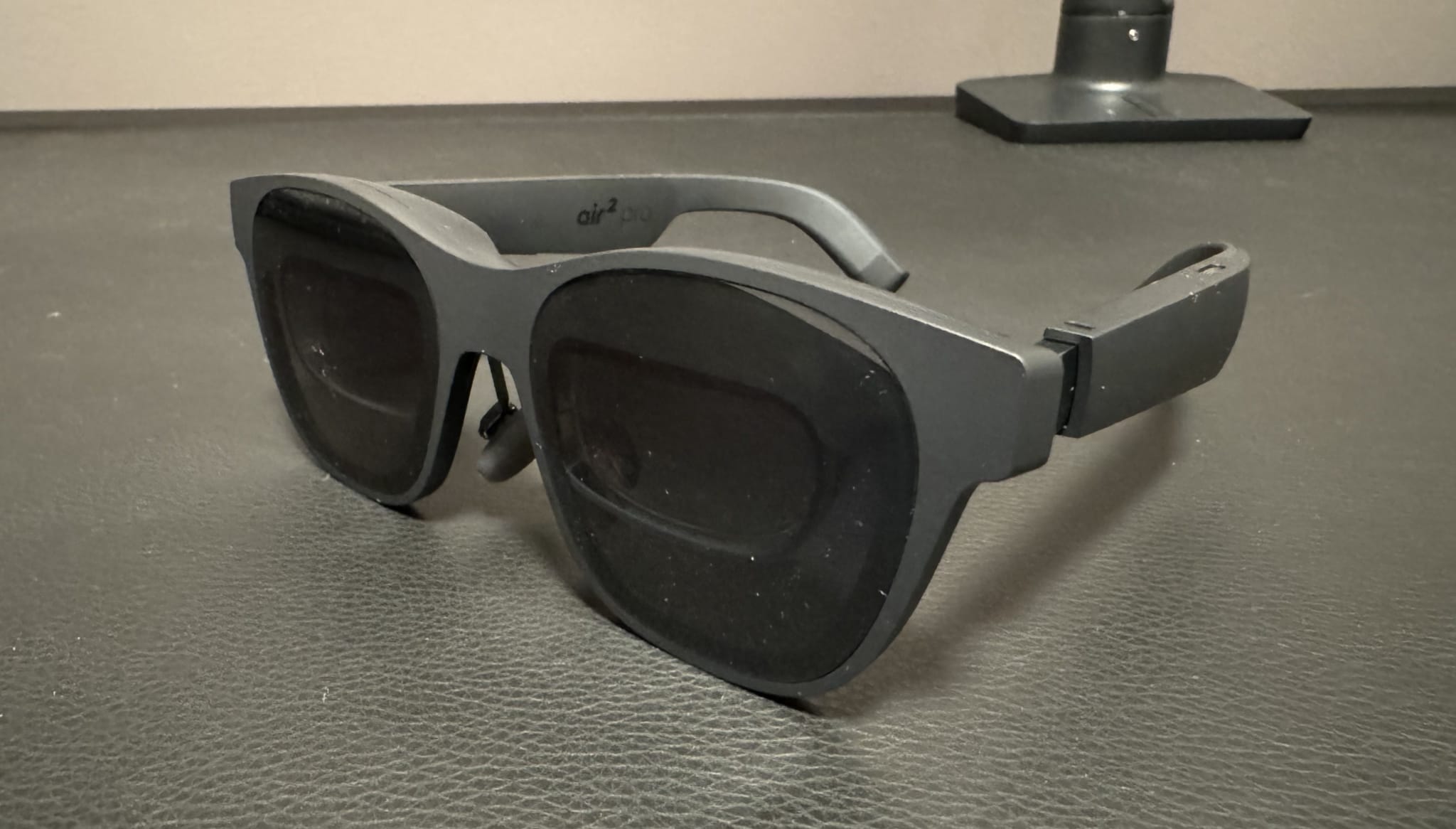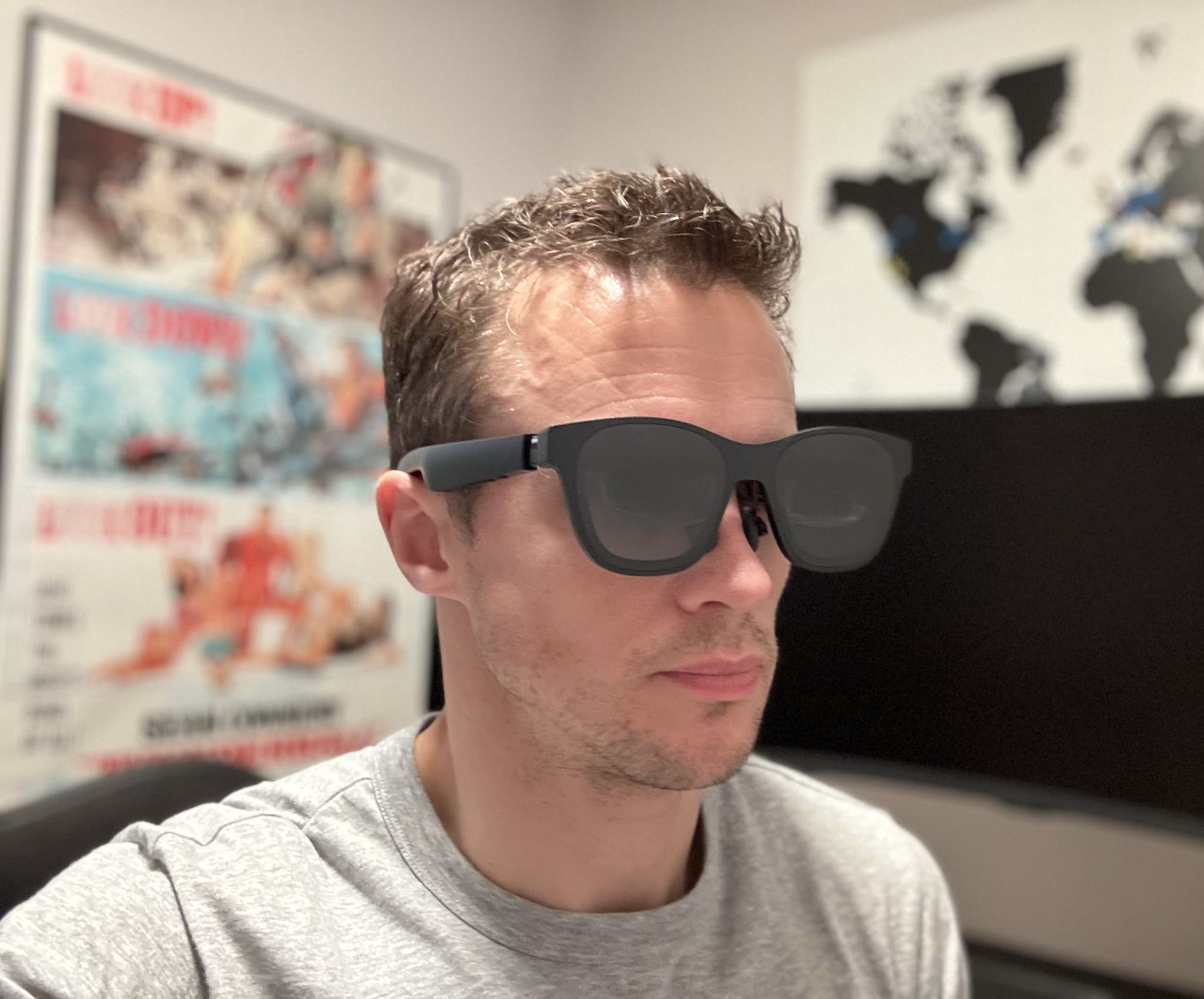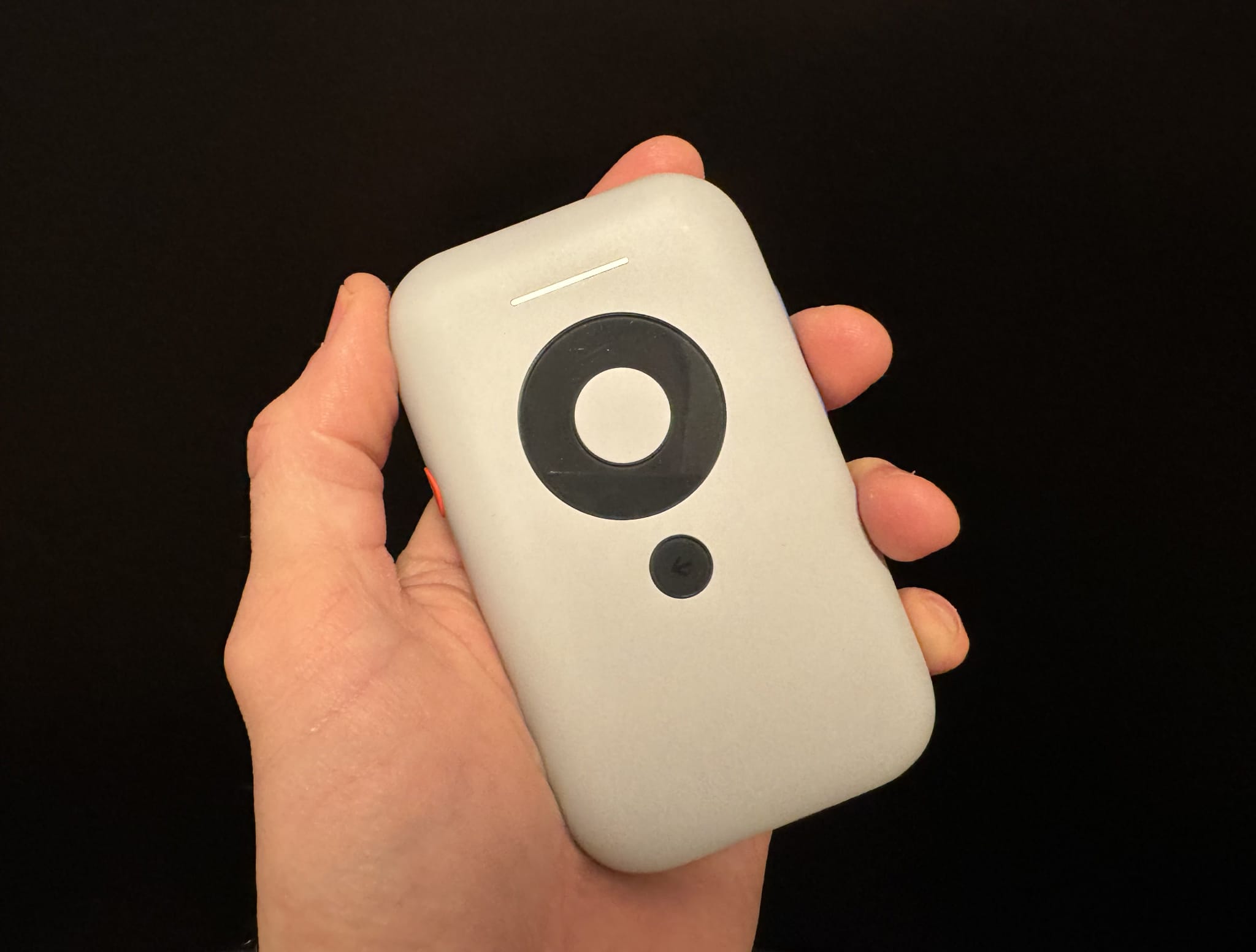XREAL Air 2 Pro
Over the years, I have experimented with different head-mounted displays, usually focused on Virtual Reality (VR) and/or Augmented Reality (AR).
Recently, I have been testing the XREAL Air 2 Pro wearable display, which delivers a large, high-resolution virtual display (like having a portable monitor). Unlike other VR/AR headsets, it does not include any integrated computing capabilities, therefore the XREAL Air 2 Pro must be connected (USB-C) to another device (e.g., Laptop, Smartphone, Games Console, etc.)
Without the need to integrate computing capabilities, the XREAL Air 2 Pro is a smaller device, that attempts to mimic the look and feel of standard sunglasses.

In reality, I would argue they are “oversized” sunglasses, certainly more discrete than a Meta Quest Pro, Microsoft HoloLens, or Apple Vision Pro, but still not something I would want to wear casually.

The specifications of the XREAL Air 2 Pro can be found below. The list price in the UK is £449. XREAL also offer the XREAL Air 2 at a list price of £399 in the UK.
- Display: Sony 0.55 Micro-OLED Panel
- Field of View: 46-degree
- Virtual Screen Size: 330-inch
- Refresh Rate: 120Hz
- Brightness: 500 Nits
- Audio Output: Second Generation Speakers
- Audio Input: Two Microphones
- Input: USB-C
- Weight: 75g (50:50 Weight Distribution)
The primary difference between the XREAL Air 2 and XREAL Air 2 Pro, is that the “Pro” supports three electrochromic dimming levels (0%/35%/100%), helping to deliver the best possible experience across different lighting conditions (indoors or outdoors). With that said, I am not sure this feature is worth the additional £50.
The XREAL Air 2 Pro supports four display modes. However, only “Air Casting” is supported natively, with all other modes requiring the XREAL Beam accessory. Air Casting is limited to a 130-inch vertical screen size.
- Air Casting: Highest refresh rate (120Hz), display instantly follows your head movements.
- Anchor: Reduced refresh rate (72Hz), display is fixed.
- Follow: Reduced refresh rate (72Hz), display smoothly follows your head movements.
- Sideview: Reduced refresh rate (72Hz), small display (20-inch) off-centre.
The XREAL Beam accessory is sold separately (£119). It unlocks the additional display modes (Anchor, Follow and Sideview) and includes an integrated battery (rated for 3.5 hours of use), as well as 32GB of storage, which can be used to install and run specific Android apps (e.g., Netflix, etc.) At the time of writing the number of officially supported Android apps, is very limited.

The XREAL Beam is also required if you want to use the XREAL Air 2 Pro with a games console (Sony PlayStation 5, Microsoft Xbox Series X/S, Nintendo Switch, etc.) Therefore, depending on your use case, the XREAL Beam may be a necessity.
Today, I have a monitor at the office and home. In either scenario, one monitor is always under-utilised (unused on the days I am at the other location). It is possible to mitigate this “waste” with shared workspaces, but this requires a level of coordination that is not always viable. With an XREAL Air 2 Pro the monitor becomes “portable”, easily transported between locations (achieving 100% utilisation).
If we assume a list price of £250 for a single 27-inch 4K monitor (e.g., Dell S2721QS), that would £500 for two (assuming only one at each location). Therefore, the XREAL Air 2 Pro at a list price of £449 would deliver a positive return on investment.
When connected directly to my MacBook Pro or iPhone 15 Pro via USB-C, the Sony 0.55 Micro-OLED panel is beautiful, with great colours and image quality (sharp text, etc.) This is especially apparent when viewing video or gaming.
Unfortunately, when attempting productivity tasks, such as web browsing, word processing, and coding, the experience is more challenging. Although the glasses are adjustable, including the angle of the arms and different-sized nose pads, I found it very difficult to find the perfect position. When not positioned correctly, the edges of the display (top/bottom and corners) become obstructed (outside the field of view) or blurry.
This is less of an issue when viewing video or gaming, as these areas are rarely the focal point. However, when focused on productivity tasks, many operating system and/or application controls are positioned at the edge.
Therefore, although it is not unusable for productivity, I have found it to be a frustrating experience, impacting my willingness to persevere for prolonged periods.
I had hoped the XREAL Beam accessory might help, as it provides more fine-grain adjustment, as well as the ability to simulate multiple monitors (which is cool). However, when using the Bean, the refresh rate is immediately halved (60Hz) and the image quality appears reduced (colour accuracy, etc.) This is disappointing, as the previously mentioned benefits are sacrificed for the increased flexibility.
In addition, the field of view (46-degree) remains fixed. Therefore, when adjusting the size and/or position of the display, the output is more prone to clipping (where the display moves outside of the viewable field of view.
In short, although the XREAL Beam has potential, I feel the negatives introduced are currently a deal breaker. Maybe these frustrations can be improved over time through software updates.
In conclusion, I do not consider the XREAL Air 2 Pro as a viable display for productivity use, leaving just video playback and gaming. This makes the list price of £449 less desirable and not something I can recommend. As for the XREAL Beam, at this time, I do not believe it is worth the additional £119.
Although my experience has been disappointing, I still believe the “concept” of a wearable display is interesting and worth continued exploration. Therefore, I hope XREAL and others continue to invest and innovate.
For example, I can imagine a world (likely many years from now) where VR/AR headsets and wearable displays such as the XREAL Air 2 Pro converge. In this scenario, the headset would target the form factor or the XREAL Air 2 Pro and/or Meta Smart Glasses, with more robust VR/AR capabilities. I can only assume this is what Apple is targeting with the soon-to-be-released Apple Vision Pro.